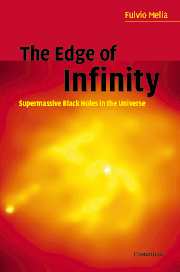6 - Supermassive black holes in the universe
Published online by Cambridge University Press: 11 August 2009
Summary
Our view of the night sky is a panoply of stars choreographed to the galaxy's spiral melody. A deep exploration of the universe beyond our immediate neighborhood would therefore not be possible were it not for the occasional chance alignment of interstices among these swarming points of light. For ten consecutive days in December of 1995, the Hubble Space Telescope peered through just such a clearing, and produced our deepest ever view of the universe, graced with thousands of galaxies bursting into life at the dawn of time.
THE HUBBLE DEEP FIELD
Called the “Hubble Deep Field” (see Fig. 6.1), this image contains not only classical spiral and elliptical galaxies, but also boasts a rich variety of other galaxy shapes and colors that hint at the influences governing the evolution of the early universe. Some of these objects may have condensed within 1 billion years of the Big Bang.
Covering a speck of sky only one-thirtieth the diameter of the full moon, the view of the Hubble Deep Field (one quarter of which is shown here) is so narrow that just a few foreground stars in our galaxy are visible. Most of the objects contained within it are instead so distant that our eyes would have to be four billion times more sensitive in order for us to see them without the aid of a telescope.
- Type
- Chapter
- Information
- The Edge of InfinitySupermassive Black Holes in the Universe, pp. 111 - 133Publisher: Cambridge University PressPrint publication year: 2003



